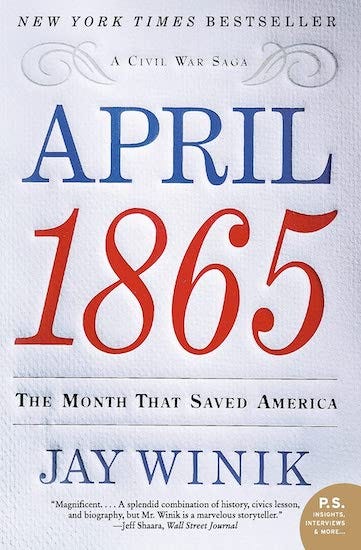What to Read Next (No. 191): staying grounded + a Civil War primer
Happy Friday, friends! I hope the long weekend and short week worked as a bit of a refresher heading into autumn. If you need a refresher of a book, look no further than Brad Stulberg’s brand new The Practice of Groundedness (featured below). If you missed Tuesday’s interview with him, check it out now.
I also wrapped up a well-known Civil War book, which I rather enjoyed. Below you’ll find why I think it’d make for a good primer on the subject, even though it covers a rather narrow time period.
One last thing: if you click any links in this week’s newsletter, you’ll notice they now point to bookshop.org rather than Amazon. Bookshop is an online bookstore that supports independent retailers—it’s taking direct aim at the big boy of the book world. From the website: “your order will contribute to an earnings pool that will be evenly distributed among independent bookstores (even those that don’t use Bookshop).”
I was earning peanuts in Amazon affiliate dollars; I’ll now earn peanuts in Bookshop affiliate dollars, and I’m happy to support local/indie in the process.
As always, let me know what you’re been reading this week! I love to hear!
The Practice of Groundedness by Brad Stulberg
Published: 2021 | Pages: 249
It’s not often that a self-improvement book truly catches my attention. Stulberg and writing partner Steve Magness did just that in 2017 with their first book, Peak Performance. What set their work apart was its focus on the whole person. It wasn’t about results or revenue, but about taking care of yourself and allowing success to follow. Their next book, The Passion Paradox, gave readers an in-depth look at the powers and perils of letting passion rule your work and life.
On Tuesday, Brad’s third book—this one with just his name on the cover—was released and serves as the apex (so far, at least!) of his work. The Practice of Groundedness brings together all of his work into a cohesive argument about why groundedness is a master virtue of sorts.
Giving readers seven principles—be present, embrace vulnerability, build deep community, etc.—Stulberg walks us through not only the theory but the super practical action steps needed to become more grounded.
What does that—being grounded—really mean, though? Stulberg first addresses the opposite: heroic individualism. This is defined as “an ongoing game of one-upmanship . . . paired with the limiting belief that measurable achievement is the only arbiter of success.” With this mindset, “you never quite reach the finish line that is lasting fulfillment.”
Groundedness, then, is an “unwavering internal strength . . . a deep reservoir of integrity and fortitude, of wholeness, out of which lasting performance, well-being, and fulfillment emerge.” It’s that last one—fulfillment—that Stulberg focuses most heavily on.
The Practice of Groundedness is a breath of fresh air in an atmosphere full of self-improvement bullshit.
Ultimately, Stulberg encourages his readers—and I wholeheartedly agree—to embrace the idea that life needs far less “relentless optimizing” and far more groundedness.
April 1865 by Jay Winik
Published: 2001 | Pages: 390
It took a couple tries for me to read James McPherson’s famed Battle Cry of Freedom—a 900-page tome that’s often celebrated as the best single-volume narrative of the American Civil War. At about 300 pages into Shelby Foote’s epic 3,000-page Civil War trilogy; I set it down and haven’t had the courage to pick it back up.
This is to say that finding an easy on-ramp to studying the Civil War is a tall task. Those years—encompassing decades when you factor in the complicated lead-up and aftermath—were so complex that brevity is nearly impossible. It’s rarely even been attempted, in fact. Foote himself was tasked with writing a simple history of the war that ballooned into over a million words and decades of his life. (The average book, for reference, is between 60,000 and 90,000 words.)
April 1865, though focused on a single month, would actually make a good Civil War intro for a lot of readers. Winik gives plenty of context throughout and provides a number of mini biographies—just a few pages each—of the most prominent figures: Ulysses Grant, Robert Lee, Lincoln, William Sherman, Nathan Bedford Forrest, and more. The narrative clips along at a surprisingly readable pace and it’s broken up into sections that make a few minutes of reading here and there totally doable.
I’ve read a lot about the Civil War, so I skimmed through some of those biographical set pieces, but overall really enjoyed Winik’s narrative powers and ability to convey the importance of that singular month. From the elation of the fall of Richmond and Lee’s surrender, to the profound despair about Lincoln’s assassination, to the somber realization that the war was finally coming to an end . . . it really was an action-packed 30 days.
One complaint: I thought Winik treated the Confederate characters with a little too much grace, which left a little bit of a sour taste in my mouth. It’s not enough praise to be a deal-breaker, but should be read alongside more modern titles that don’t necessarily mention the heroic courage of the likes of Robert Lee, Joseph Johnston, and Nathan Bedford Forrest.
Ultimately, it was an enjoyable and highly digestible book that would do well as a starting point for reader who enjoys history but hasn’t much delved into the Civil War. Happy to give it a solid four out of five stars.
Thanks so much for reading! I sure appreciate the time and inbox space.
-Jeremy



